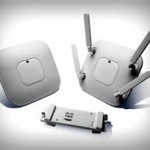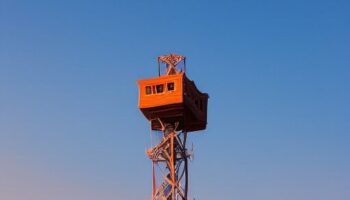 I believe, everyone in telecom fraternity has heard of Femtocell aka Small Cell by this time. The term itself is synonymous to a cell site which is small or femto in size, as compared to existing micro/macro cells, which we generally see on Roof Top Towers or Ground base Towers or even on wall poles. The technology behind these Small Cells sites is quite new, but the idea exists over past decade or so.
I believe, everyone in telecom fraternity has heard of Femtocell aka Small Cell by this time. The term itself is synonymous to a cell site which is small or femto in size, as compared to existing micro/macro cells, which we generally see on Roof Top Towers or Ground base Towers or even on wall poles. The technology behind these Small Cells sites is quite new, but the idea exists over past decade or so.
So why are we talking about Small Cells or Femtocell now, if the idea existed over past decade? Two reasons! But before we start, for newcomers, there’s excellent resource by Small Cell forum, the governing body of SC Standards, put up if you want to get familiar with the concept or technology itself. First reason comes from the fact that, in just year 2013, the global data traffic grew by 81{af589cdba9d77786c8c861317dbad60bba1e2ebbf56e2ffab874a1b59fde9ce3} Y-o-Y and reached to 1.5 exabytes, which is itself 18 times to the data traffic carried in year 2000. The whopping demand for data (Web browsing, Social Media & messengers, Video Streaming, Live events streaming etc) has put lots of stress on network backbone, especially deployed by Telecom Operators, as total of 95{af589cdba9d77786c8c861317dbad60bba1e2ebbf56e2ffab874a1b59fde9ce3} of data traffic is being generated from Smartphone users. And that’s where Femtocell are going to play key role, as many of them will or are getting deployed in residential homes, SMEs, or even at hotspot arena and their proximity to users is helping to carry data at desired speed & quality.
Second reason- the technology challenge in deployment or design from Network perspective. Although we would be talking about what exactly those challenges are in next topic, this article is from end user perspective, who are actually going to deploy or use the services provided by Femtocells.
The Third Generation partnership project (3GPP), the standard body behind Cellular standards specification, had proposed the standard for design/deployment of Femtocells in year 2004-05. But only in year 2007-2008, the body has put some dedicated releases for Femtocells in terms of specifications of interfaces & co-working with existing network elements. Since then deployments of Femtocells are/were in pilot phases to test some of the features & still evolving. But the technology now has become more mature to start deployment on ground for end users.
So perhaps, if we find a Wi-Fi Hotspot at nearby Cafe, Homes, and Offices or even at Airports, are kind of Femtocells, which are helping us to browse, work & play simultaneously, offloading some of the data traffic burden on 2G/3G/LTE network sites. Although in real senses they are Wi-Fi Hotspots, they serve the similar purpose of those of Femtocells with some key differences.
One key difference is that Wi-Fi Hotspot works is un-license band, whereas Femtocell works in license band of spectrum. So you need to contact your Telecom Service provider, if you want to deploy one. Unlike Wi-Fi, which can be deployed by ISPs or individual homes without much worry, Femtocells, being in license band, requires lots of preparation before we deploy them. Here are some key points:
- As a home user or even as a IT manager of SME, Femtocell needs to be deployed by Telecom Operator only. So if you have a CUG group tied with one Telecom Operator, you can request the same Opco, if they deploy Femtocell at SMEs or Homes. If yes, then after completing the commercial obligations, Opco would deploy it at your home/office, which you can use for Calling & Internet Access as well for video streaming. In this case, the recurring charges would be your calling & data usage charges.
- Unlike Wi-Fi, which works in un-license band & serves the purpose of high speed Internet connectivity, Femtocell serves two purposes. First, it can be used for Voice calling, where Femtocell is configured to allow particular mobile numbers to latch on for Voice calling only. Second, in similar fashion, it can be used for High speed Internet connectivity. Only constrain- all users at home/office need to be subscribers of single telecom operator (Femtocell Service Provider-FSP). So make sure all your office users or home users are subscribed to Single Operator before deployment.
- Unlike Wi-Fi, Femtocell is cellular base station albeit a small one, which either works on GSM (2G), WCDMA (3G) or LTE (4G) or with all above. So all pro-cons of your cellular technologies come inherent with Femtocell. With limited power radiations at home/office, it has certain range of 10-50 m, which can be set dynamically or depends on environment in which it’s getting installed. So placement of Femtocell significantly impacts the performance. Choose the right location, specified in Femtocell user manual or suggested by Opco person for maximum network coverage, either on ceiling without surrounding obstruction or somewhere on wall facing.
- While none of the Telecom Operators offer 4G or even 3G Femto base Station services at moment in India, some of them offer 2G Femto/Pico Cells for Priority customers. It’s quite different from Cellular Repeaters/Boosters installed by many offices in recent years at their cost. Again, Femtocell is a base station which generates its own signal, unlike booster/repeater, which just boosts signal taken from nearby Cell site & amplify it to area desired.
- As mentioned, Femtocell is low power base station (unlike boosters which are very powerful in ranges from mili Watt to Watt), which has upper ceiling of 100 mW (20 dBm), which is equivalent to your Smartphone radiated power/signal. So the concerns, like radiation or health issues are already taken care by. But make sure the Operator is complying to the radiation norms specified before your deploy those.
There are certain challenges from network engineer’s perspective before these Small base stations are deployed in huge numbers. We will continue the topic from Network perspective in next article.


